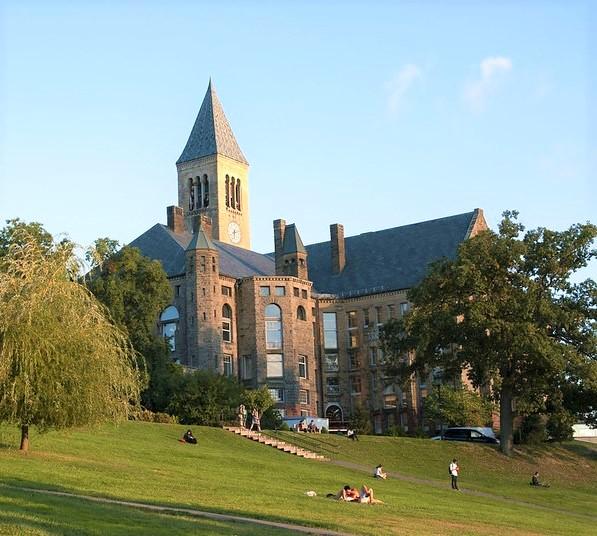A study assessing Cornell University's COVID-19 surveillance and vaccination programs during the Omicron variant surge suggests that vaccination protected against severe infection, but it and other mitigation measures—including mass testing—didn't prevent rapid viral transmission.
The study, published today in JAMA Network Open, describes the outcomes of the university's SARS-CoV-2 transmission-prevention programs implemented after the campus reopened for in-person instruction in fall 2021. Steps included mandatory vaccination for students, urging of vaccination for employees, and an on-campus mask requirement. In addition, isolation and contact tracing took place within hours of all COVID-19–positive tests.
Vaccination rates were high among students and staff of the Ithaca, New York, university, at 97.9%. From Aug 26 to Dec 18, 2021, all 15,503 undergraduates, 2,873 graduate students, and 2,803 employees were required to register for and participate at least once weekly in free, on-campus polymerase chain reaction (PCR) COVID-19 surveillance testing.
Each day, school officials reviewed COVID-19 test results to identify sentinel events and outbreaks and guide disease-containment strategies. They also monitored test compliance rates and routinely submitted positive samples for genetic sequencing.
Mostly mild infections, no hospitalizations
A total of 480 COVID-19 cases were identified for quarantine on entry testing from Aug 23 to Sep 10 (average, 22.9 per day). From Sep 12 to Nov 27, 330 infections (1.9 students and 2.4 staff per day) were detected, for a 0.1% positivity rate.
But surveillance outcomes drastically changed among students after they returned from the 5-day Thanksgiving break, with 75 infections (average, 10.7 daily cases; 0.5% positivity rate) from Nov 28 to Dec 4, 655 cases from Dec 5 to 11 (93.6; 2.9% positivity), and 1,559 infections from Dec 12 to 18 (222.7; 5.7%).
From Nov 28 to Dec 31, 2,797 infections were reported among students and staff (average daily cases, 82.3; 3.1% positivity). Students made up 89.0% of the cases, with employees constituting the remainder.
The vast majority of infected students and staff (82.2%) had mild illnesses, and none were hospitalized. Nearly all (98.6%) infections occurred in vaccinated people, and more close contacts tested positive for COVID-19 during this period than before (22.6%, vs 4.4% from Aug 23 to Nov 27).
"Something had clearly changed in the university setting, as similar outbreaks were not yet being seen in the off-campus community or neighboring counties," the researchers wrote.
On Dec 1, whole-genome sequencing of positive samples identified Omicron as the causative agent in 1 case, followed by 1 on Dec 2, 2 on Dec 3, and 4 on Dec 4. By Dec 11, 155 of 174 sequenced samples (89.1%) were confirmed as Omicron, and the remainder were identified as the previously dominant Delta variant.
Variant evaded vaccines in most cases
Noting the rapid spread of Omicron, university officials limited in-person interactions on Dec 10. On Dec 14, they banned student gatherings, moved exams online, and implemented an exit-testing protocol.
While these efforts reduced numbers of student infections, incidence among those who stayed in the city immediately after the Christmas holiday (Dec 26 to 31) remained elevated relative to before Thanksgiving, with 11.5 daily student and 16.0 employee cases, for a positivity rate of 4.8%.
The authors said that Cornell's experience demonstrates that standard COVID-19 public health protocols were no match for Omicron.
"While vaccination protected against severe illness, it was not sufficient to prevent rapid spread, even when combined with other public health measures including widespread surveillance testing," they wrote. "As SARS-CoV-2 continues to adapt, surveillance and case-series studies that look across different populations and settings will be helpful in identifying sentinel events and guiding actions to mitigate harm."




















